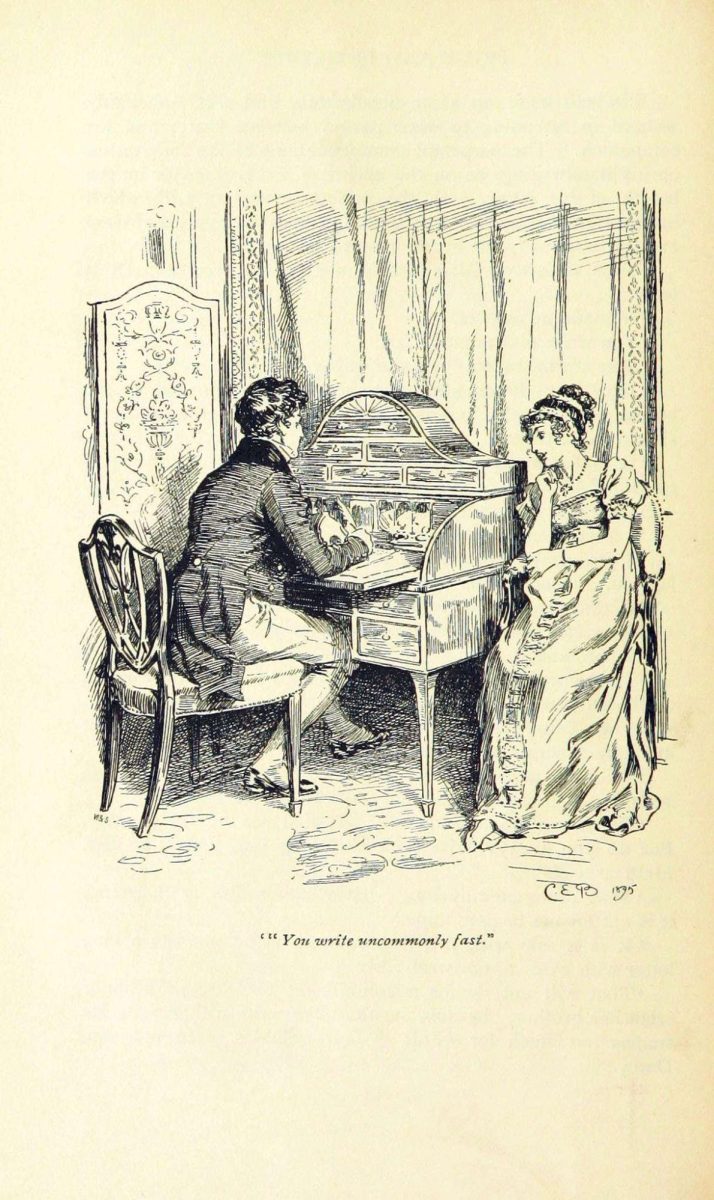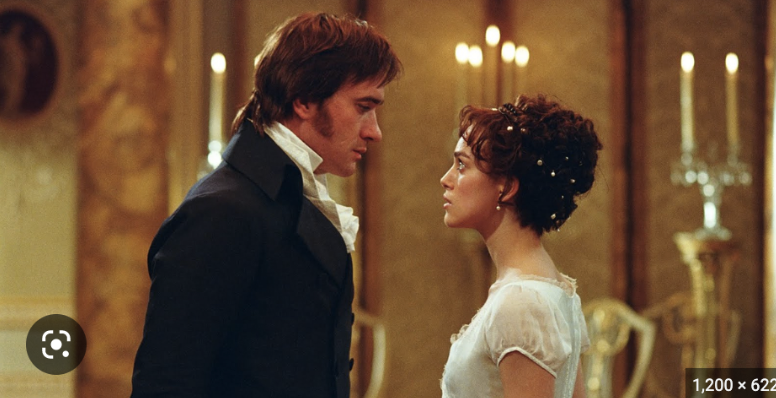In Jane Austen’s novel Pride and Prejudice, the romantic relationships of characters such as Jane and Bingley, Charlotte and Mr. Collins, and Lydia and Wickham give examples of how romantic relationships were affected by the British Class System in the 1800s. By analyzing these characters and their relationships with one another, one can see the positive and negative toll of social hierarchy in the romance novel, translated into real life.
The class system of the Victorian era was primarily divided into three categories: the upper class, the middle class, and the lower class. People were categorized into different social standings based on “occupation, education, income and social status.” Having been written in that era, Pride and Prejudice focuses mainly on the upper and middle classes.
The upper class was the smallest percentage of the population; roughly 1% of people made up that class. Because of this, people from the upper class had lots of power and lacked little to nothing. These individuals primarily came from generational wealth; therefore, as expected, men sent their sons and daughters to marry into a family with similar standings, to sustain the wealth between the two families. The education system was known to be the best, as children were prepped for their future roles. As boys’ schooling was deemed to be more important, they were taught academic and practical skills while girls were taught sewing, needlework, drawing, and music.
Unlike in the upper class, the people of the middle class worked hard for most of their earnings. Most people in the middle class were lawyers, doctors, or teachers. People of the middle class did not receive as many privileges as the upper class yet were able to still receive a large sum of money to sustain their wealthy lifestyle. The education system was similar to that of the upper class, as boys went to boarding school to learn how to manage a business while girls were taught to be proper housewives to men of similar backgrounds.
Because of the way the class system worked, people of the middle class were eager to marry into a higher class for more comfort. This was the same case in the upper class to sustain generational wealth. Most of the time, people would marry out of convenience – people of the middle and upper classes got married to sustain what wealth they had and to possibly increase it. Therefore, marrying into a lower-income family with no status or power was not promising for people of the middle class.
In Jane Austen’s Pride and Prejudice, the relationship between Charlotte and Mr. Collins portrays this concept of convenience and money. Charlotte, a friend of the Bennets, is from an upper-class family. As expected, she must marry into a family with commonwealth, power and social standing. Mr. Collins is to inherit the Bennet’s estate when Mr. Bennet dies. Because of this, one of the Bennet sisters is to marry him to keep their home. Instead, Charlotte marries him for money and convenience. However, Mr. Collins does not have or show any affection towards her, leaving both Charlotte and Mr. Collins in an unhappy marriage. This was very common for women in the 1800s, as marriages were “imagined as matches made for personal fulfillment as much as for status and power.”
That being said, a relationship based on true love and infatuation seemed like a relationship that would be most worthwhile due to mutual affection. However, Lydia and Mr. Wickhams’ relationship shows that naive love is not practical in the long term. Lydia Bennett is known as immature and naive. She seeks a relationship that will allow her to travel and go on adventures. Wickham is similar to her in that regard, as his character is displayed as a selfish, manipulative man who is known for his bad reputation concerning women.
Women of the eighteenth century were not allowed to work; therefore, they depended solely on having a good husband who would give them a comfortable life. Certain standards and rules were set for a young woman to marry a good husband. Some things made her desirable and others made her unwanted. Jane Austen shows readers how marrying a person out of curiosity is not beneficial if it may add a bad title to your name. Because they wanted to get eloped, Lydia and Wickham’s relationship would destroy Lydia’s social standing. It was disgraceful for a woman to get eloped, as the assumption was that you had slept with your fiancé before getting properly married. An association with someone like this would ruin the whole family, as this ‘devalues’ their morals.
If these are all examples of relationships that fail or of marriages that are not successful, then what kind of relationship would be most beneficial to two lovers in the Victorian era? A perfect example of a long-lasting relationship, as shown in Pride and Prejudice would be Jane and Bingley’s relationship. Jane is the eldest of the Bennet girls. She is known for her beauty and elegance. As the eldest child, she is expected to marry into an equally, if not more wealthy family. Mr. Bingley, a wealthy man who rents apartments near the Bennets, fits the description of the man Jane would like to marry. At a ball, Mr. Bingey spots Jane as he “thought her quite beautiful and danced with her twice!” Even though his family disapproved of his feelings for Jane, he married her anyway because of his love for her. This relationship worked well, as the two came from well-off families, loving and respecting one another equally.
Because of the class system and the way it shaped society into wanting to sustain luxurious lifestyles, it seemed as though everyone was trying to climb a social ladder to get to the top or to sustain what wealth they had. So many rules were set for young women that, if broken, could result in disgrace and shame on, not only her but, her whole family. Marrying to sustain wealth was not as seemingly perfect. There was not always that ‘love at first sight’ appeal and most times, the couple was unhappy in the marriage, fighting to rekindle a spark that was never there. Jane Austen shows readers in Pride and Prejudice that relationships and marriages are never successful based on infatuation, convenience or money alone. There had to be mutual respect, love and commonwealth for a relationship to truly blossom.
Nowadays, one’s class does not determine whether or not a couple can marry, unlike in the eighteenth century. Despite societal and familial pressure still being realities, it is not a necessity to marry an individual based on their commonwealth. Despite this, mutual respect and love still play a big part in maintaining a relationship, even now in the present.


